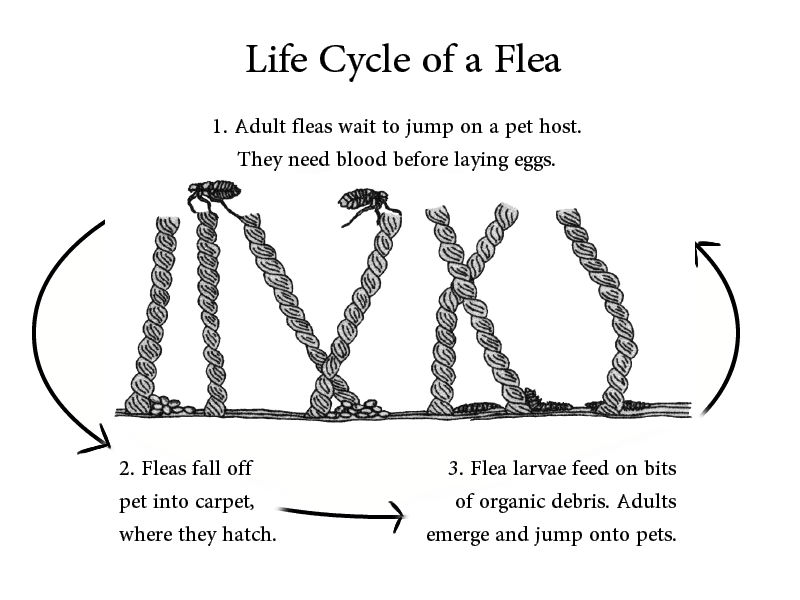 I wrote last week about my favorite products for keeping fleas away from my dog, Max. I thought I’d add in a little more information about fleas, their life cycle, and how to get them the heck out of your house and garden.
I wrote last week about my favorite products for keeping fleas away from my dog, Max. I thought I’d add in a little more information about fleas, their life cycle, and how to get them the heck out of your house and garden.
Fleas are really well-suited for survival, even in our modern world. Fleas often infests lawns and gardens, but can quickly create a big population inside a home. Adult fleas that have made it indoors spend most of their time in carpets and upholstery, only jumping onto your pets (or you) when reproducing. A female flea needs nutrition (i.e., blood) before laying eggs, which are then usually laid directly on the host animal.
Flea eggs are round and light-colored. They are not attached to the infested dog or cat in any way, and they quickly roll off. Because of this, your pet’s favorite resting place is also likely to be your home’s main flea nursery.
The eggs hatch a few days after they’re laid. The emerging larvae look like tiny white worms, but they’re too small to be easily seen by the naked eye. Larvae live in floor cracks, carpets, upholstered furniture and pet bedding. They can eat (and thrive on) virtually any organic matter, including dust.
The larval stage lasts between a week and a month, after which the larvae form silken cocoons and enter the pupal stage. These pupal cocoons become encrusted with sand and dust and are thus all but impossible to spot. The adult is fully formed after a week or two but won’t emerge until it senses something warm (like your cat or your leg) nearby.
If you’re going to cut out a big flea infestation, you’ll have to use several methods of eradication before the bugs are total eliminated. Check out those recommendations from last week.
